Selling your photos for money can be a fulfilling way to monetize your passion. This comprehensive guide, brought to you by dfphoto.net, explores various platforms and strategies to transform your photography skills into a profitable venture. Learn how to license your work, build a compelling portfolio, and market your images effectively.
1. What Are The Best Websites For Selling Photos Online?
There are numerous platforms available to photographers looking to sell their work online. Finding the right one depends on your specific needs and goals.
1.1 Alamy
Alamy boasts one of the most diverse stock photo collections online.
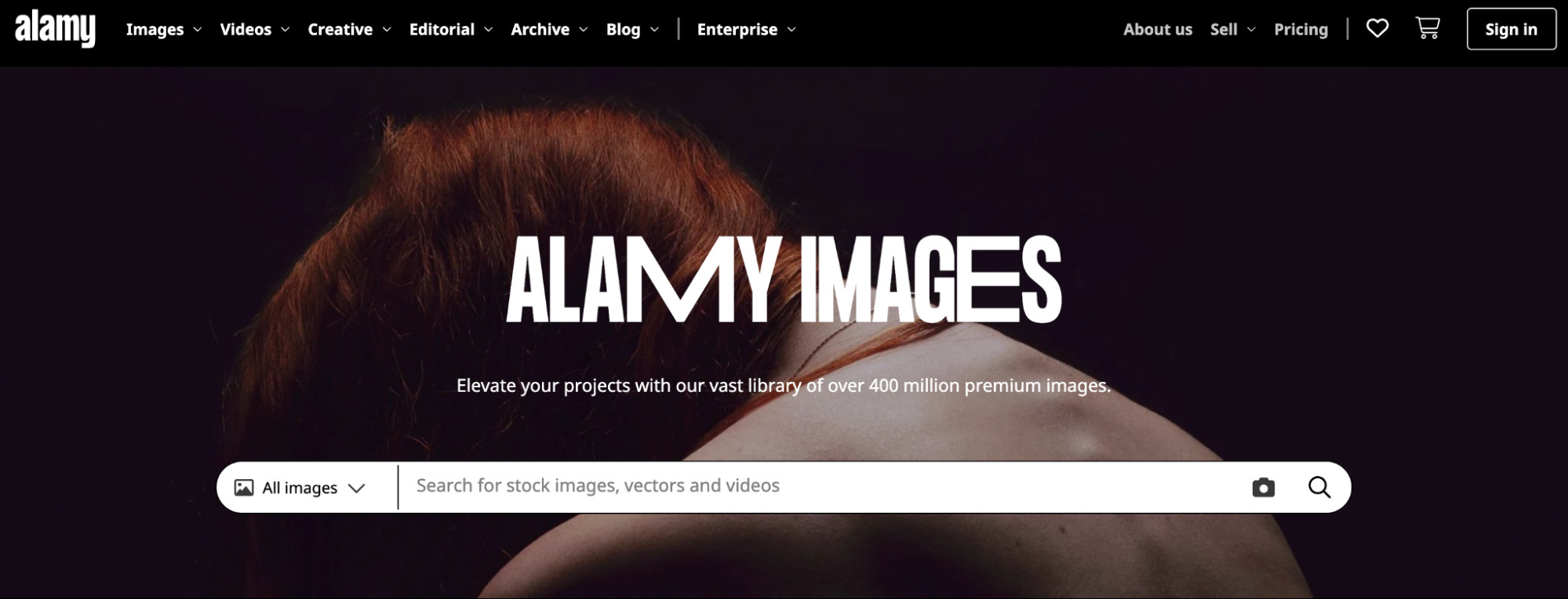 Alamy Images homepage showing a search bar for people to find royalty-free images.
Alamy Images homepage showing a search bar for people to find royalty-free images.
Alamy is known for its extensive library of stock images, vectors, videos, and 360-degree panoramic images. Alamy is a great platform for contributing photos due to the many ways photographers can contribute. They even offer an iOS app called Stockimo, enabling you to sell photos directly from your phone.
1.1.1 How Does Alamy Pay?
Alamy offers monthly payments with various commission models. Photographers earn between 17% and 50% of sales, influenced by image popularity and license type. There are no long-term contracts, and payments can be made in multiple currencies.
1.2 500px
500px combines stock photo licensing with community engagement.
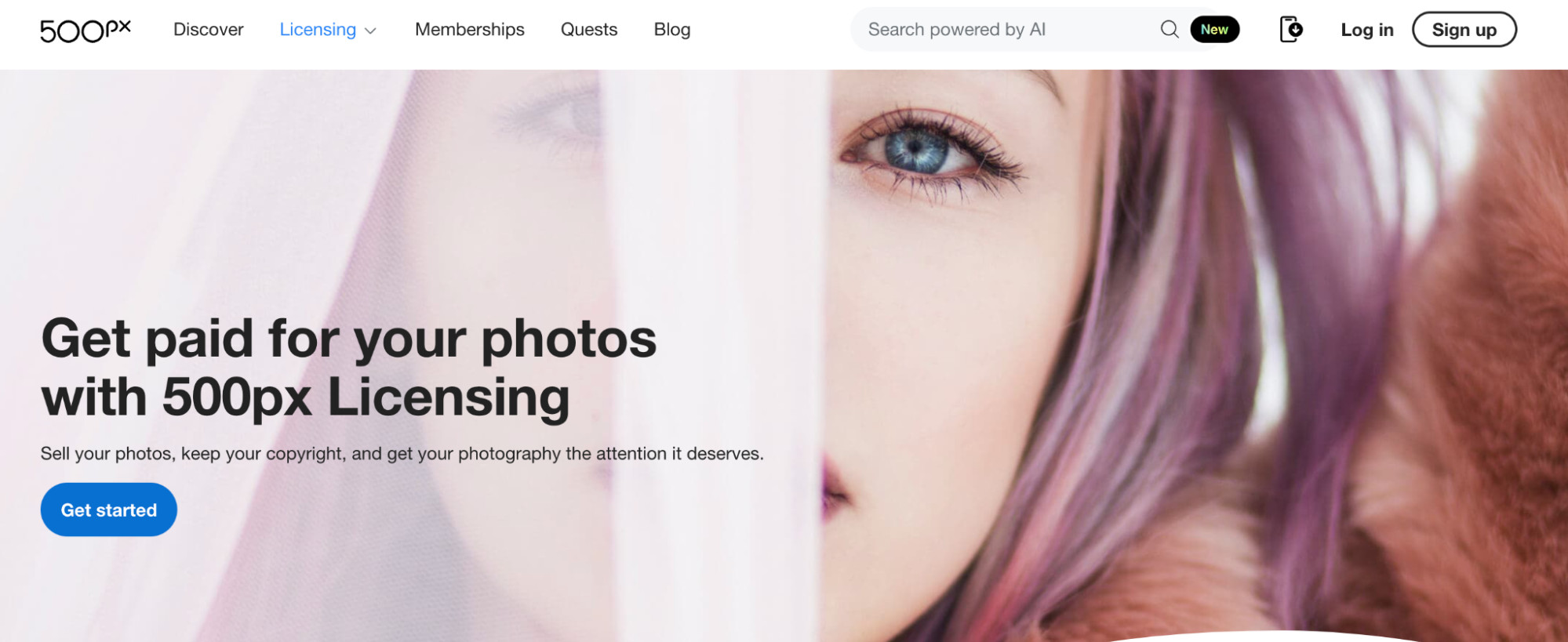 500px’s homepage that shows how contributors can get paid for their photos with licensing.
500px’s homepage that shows how contributors can get paid for their photos with licensing.
500px is a platform where millions of photographers sell and license their photos. Its Pulse algorithm helps surface new talent and photographs to potential clients, offering opportunities even for inexperienced photographers who meet the platform’s quality standards. Beyond selling, 500px is also a thriving online community where you can connect with other photographers, receive feedback, list photos in the marketplace, and participate in contests.
1.2.1 How Does 500px Pay?
Paying members can earn up to 100% royalties for exclusive photos, making it a lucrative option for committed photographers.
1.3 Shutterstock
Shutterstock is a renowned stock photography website.
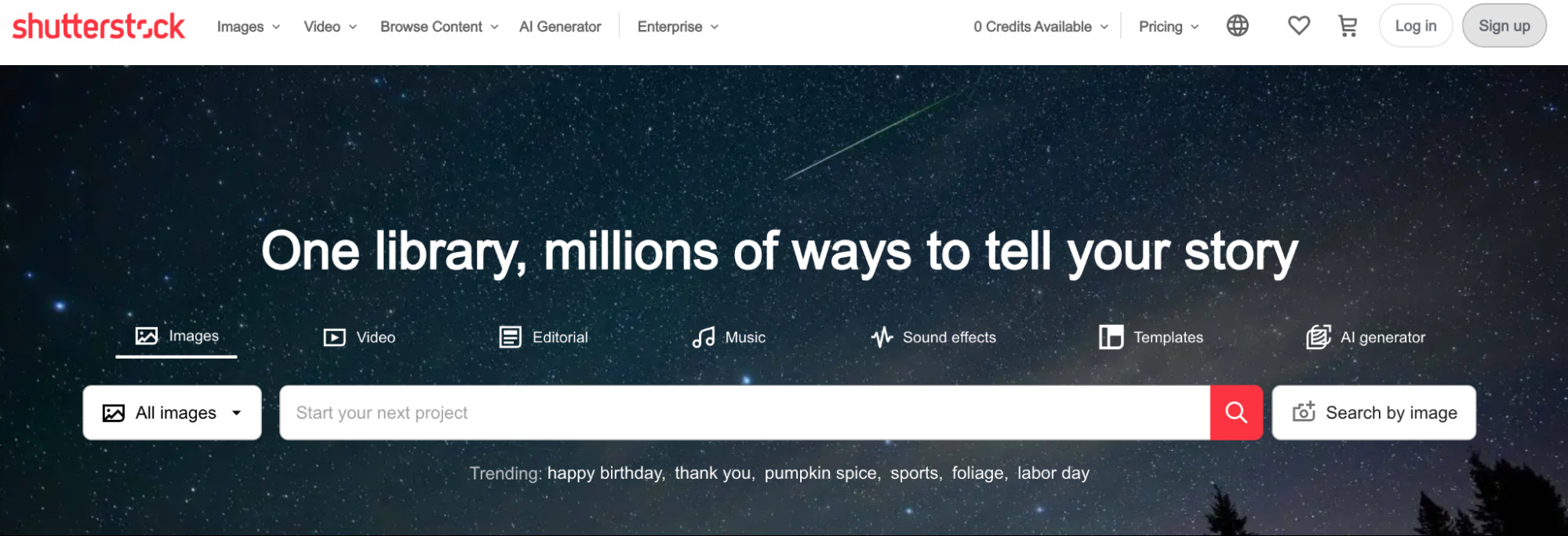 Shutterstock homepage that lets people find royalty-free images, video, and music.
Shutterstock homepage that lets people find royalty-free images, video, and music.
Shutterstock has paid out over $1 billion to its community in the past 15 years. It is considered a micro-stock site, offering non-exclusive photos at affordable prices. Success on Shutterstock involves contributing a large volume of images.
1.3.1 How Does Shutterstock Pay?
Payouts range from 15% to 40%, based on earnings over time. Shutterstock also has an affiliate program that allows you to earn additional income by referring new photographers or customers.
1.4 Getty Images
Getty Images is known for its premium stock photos.
 Getty Images’ homepage with a search bar that helps people find photos and images.
Getty Images’ homepage with a search bar that helps people find photos and images.
Getty Images attracts brands and online publishers seeking high-quality, exclusive images. Together with its microstock site, iStock, it reaches over 1.5 million customers worldwide. However, Getty Images has stricter standards for photographers.
1.4.1 How Does Getty Images Pay?
To become a contributor, you must apply with a set of sample photos. Once accepted, you can earn between 15% and 45% of an image’s license fee.
1.5 iStock
iStock is a non-exclusive alternative to Getty Images.
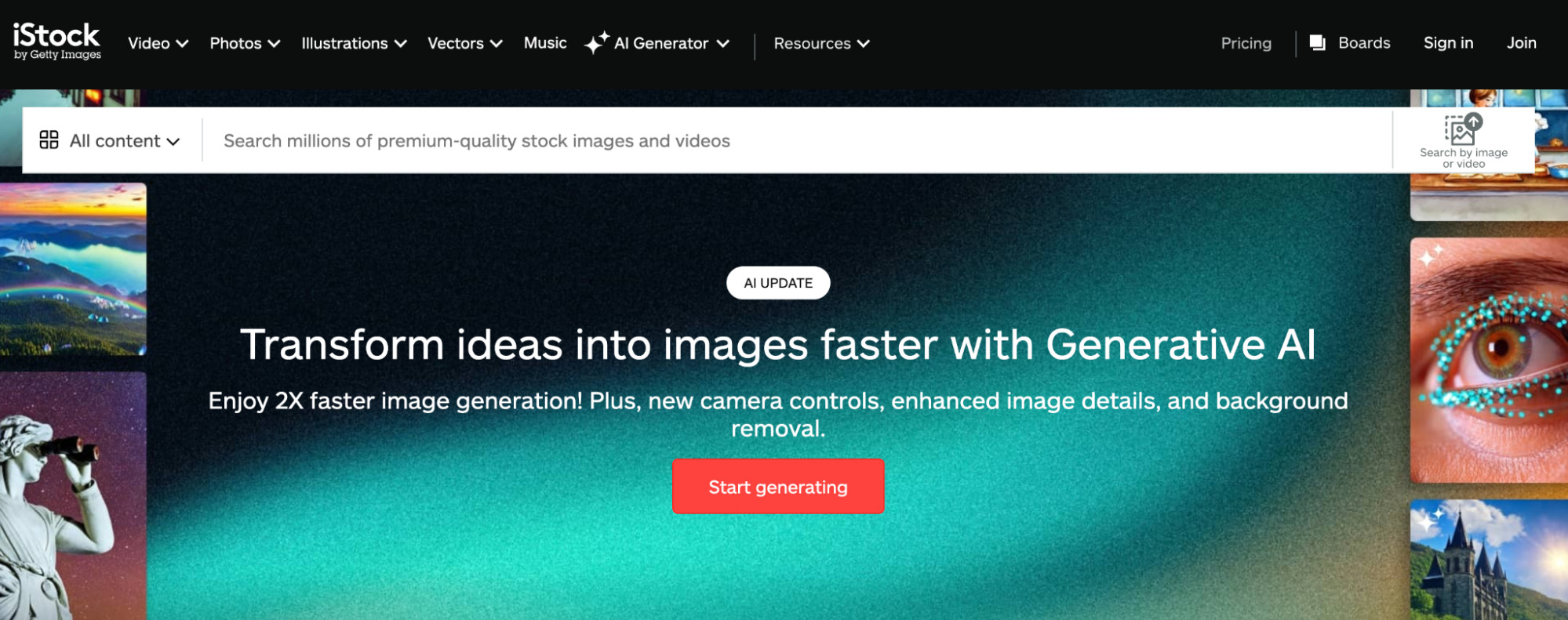 Landing page for iStock that shows its generative AI-powered image creator.
Landing page for iStock that shows its generative AI-powered image creator.
iStock, an offshoot of Getty Images, allows you to sell non-exclusive photos, meaning you can also sell your photography through other agencies.
1.5.1 How Does iStock Pay?
To sell on iStock, you need to apply with sample images. Commissions range from 15% to 45%, based on contributor agreements.
1.6 Stocksy
Stocksy is an accessible platform for new photographers.
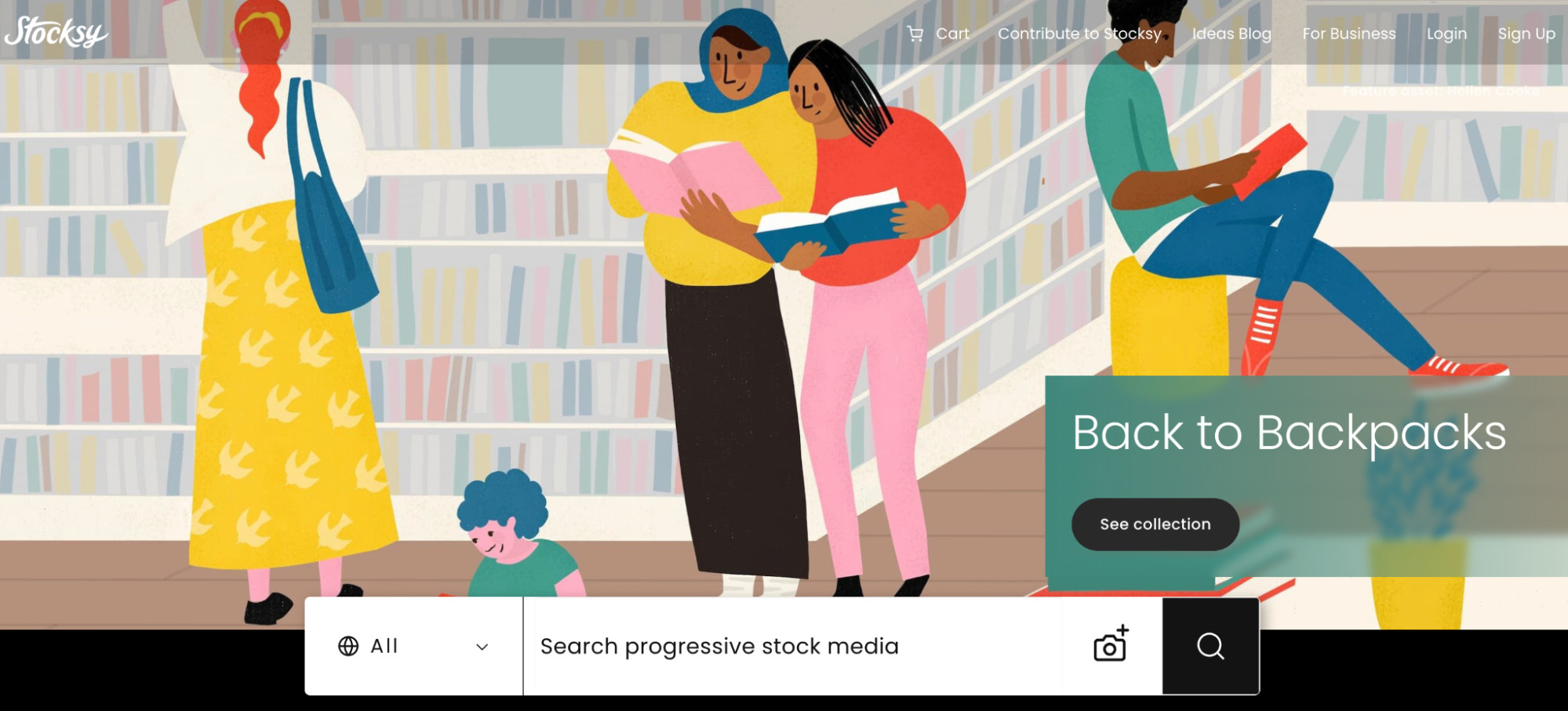 Stocksy homepage with an art graphic of people in a library.
Stocksy homepage with an art graphic of people in a library.
Stocksy offers high payouts to contributors, with a 50% royalty on standard licenses and 75% on extended licenses. Photos must be exclusive to the platform. As an artist-owned cooperative, contributors are part owners and can participate in profit-sharing.
1.6.1 How Does Stocksy Pay?
Stocksy pays monthly via PayPal, Payoneer, or check, with a minimum payout of $100.
1.7 Picfair
Picfair allows you to create your own photography e-commerce website.
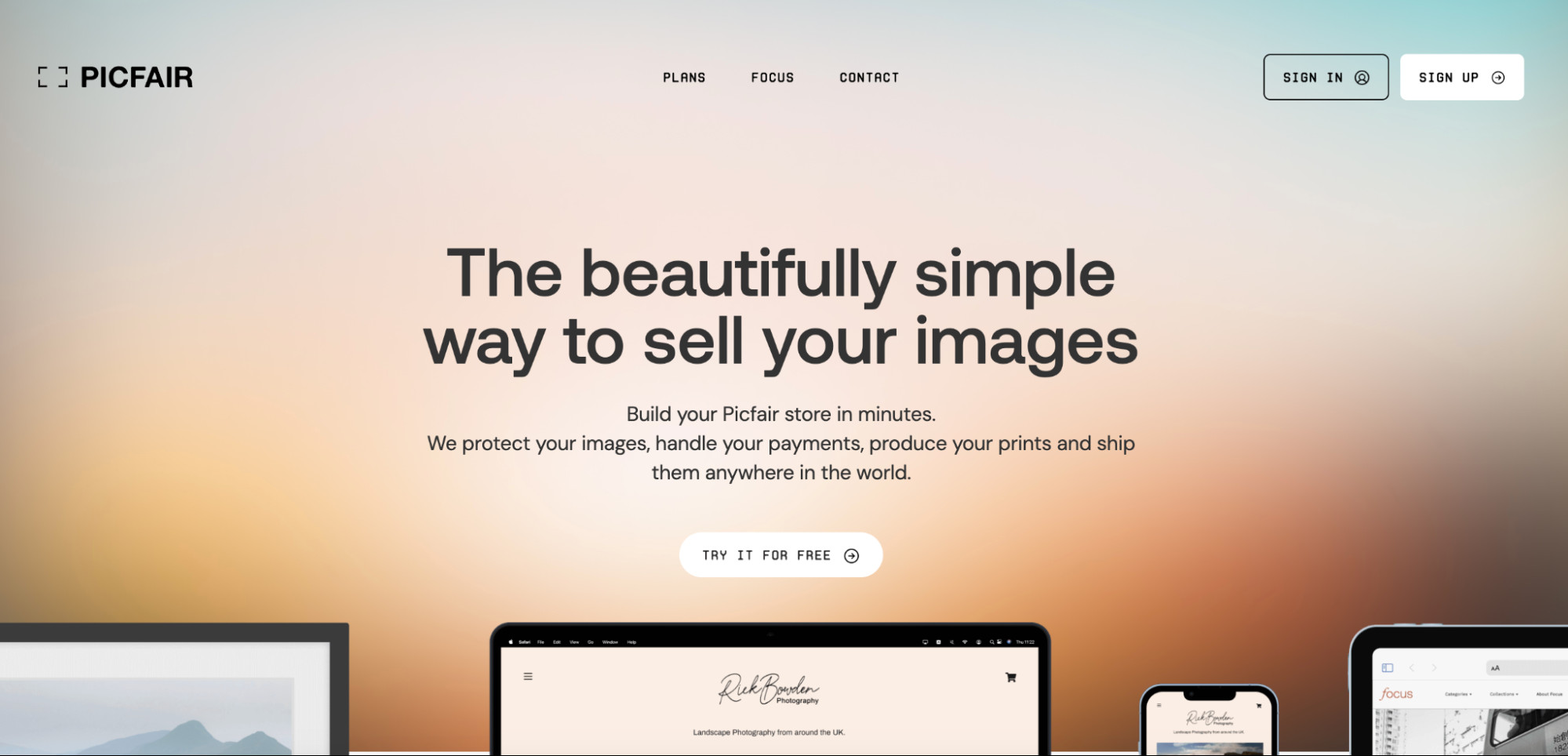 Picfair landing page for a website builder built for photographers.
Picfair landing page for a website builder built for photographers.
Picfair offers greater control over your online photo portfolio. You can set your own prices for prints and digital downloads, with Picfair handling payment processing, print production, shipping, and licenses.
1.7.1 How Does Picfair Pay?
Sign up for a Plus plan, priced at $4 per month when billed annually, to create a custom store with up to 10,000 images for sale.
1.8 Adobe Stock
Adobe Stock integrates seamlessly with Adobe’s photography software.
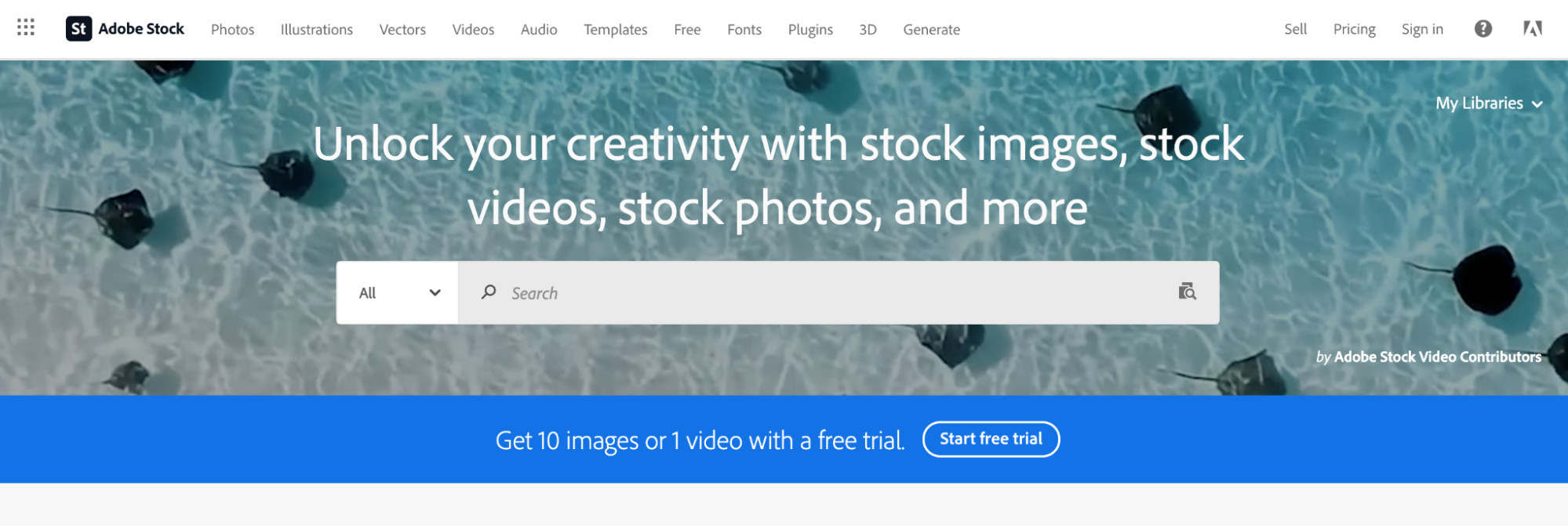 Adobe Stock homepage showing a search bar against a photo of sting rays in the ocean.
Adobe Stock homepage showing a search bar against a photo of sting rays in the ocean.
If you use Adobe Creative Suite, you can add your images, videos, vectors, and illustrations to Adobe Stock.
1.8.1 How Does Adobe Stock Pay?
Upload assets directly from Lightroom and Bridge. Contributors who link their Adobe ID can earn 33% royalties on photos and 35% on videos.
1.9 Envato Elements
Envato Elements allows you to share in total subscriber revenue.
 Landing page for stock photos on Envato Market.
Landing page for stock photos on Envato Market.
With Envato Elements, you can sell photos online and connect with potential clients, either through its app or by uploading photos to your own site on the brand’s domain.
1.9.1 How Does Envato Elements Pay?
Contributors earn between 25% and 50% of net subscription revenue.
1.10 Unsplash+
Unsplash pays photographers for submitting images for assignments.
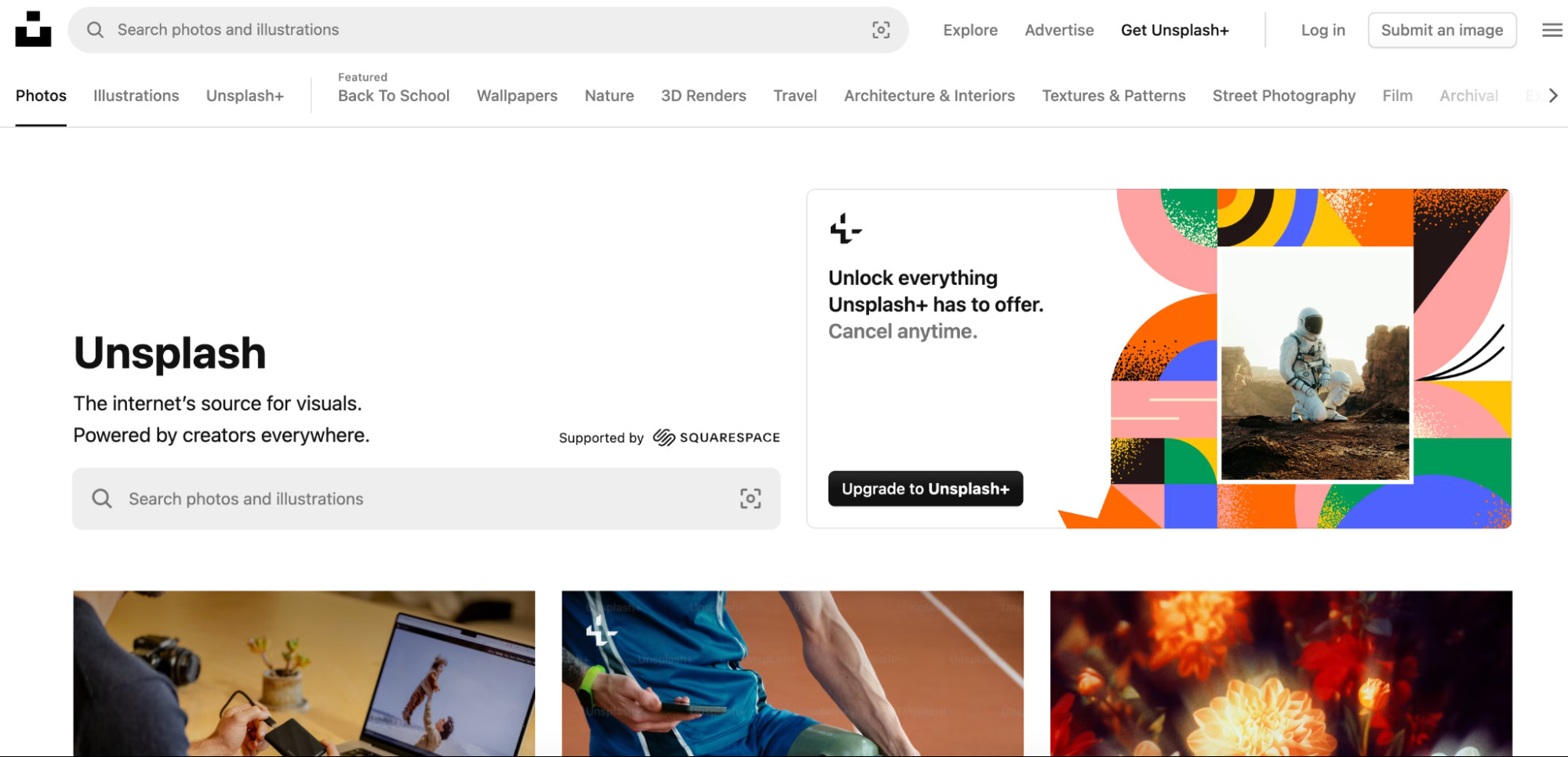 Unsplash homepage showing stock photos and a call-to-action for Unsplash
Unsplash homepage showing stock photos and a call-to-action for Unsplash
Unsplash, owned by Getty, pays photographers through its Unsplash+ program. Instead of paying based on photo sales, Unsplash partners with contributors who respond to briefs and requests.
1.10.1 How Does Unsplash+ Pay?
After completing the application and being accepted, you’ll see a list of briefs from Unsplash customers. Rates for accepted photos range from $5 to $30 per image.
1.11 Dreamstime
Dreamstime’s microstock library contains over 250 million photos.
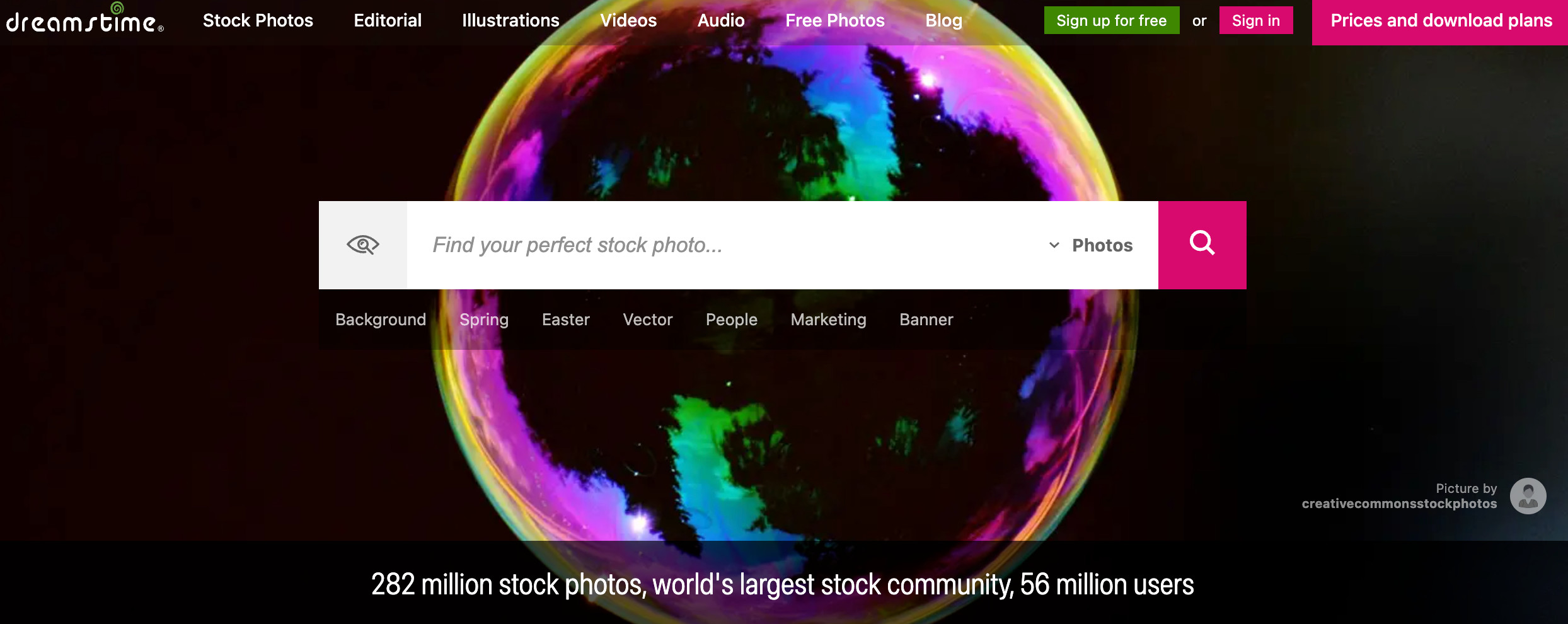 Dreamtime homepage where you can sell photos
Dreamtime homepage where you can sell photos
Dreamstime provides access to a large, active audience with its extensive range of royalty-free media, including stock photos, vectors, videos, and audio files.
1.11.1 How Does Dreamstime Pay?
Dreamstime offers revenue sharing of 25% to 50% for non-exclusive content. Exclusive contributors earn an additional 10% and receive 20¢ for each approved submission. The platform also has an affiliate program.
1.12 Snapped4U
Snapped4U is tailored for event and portrait photographers.
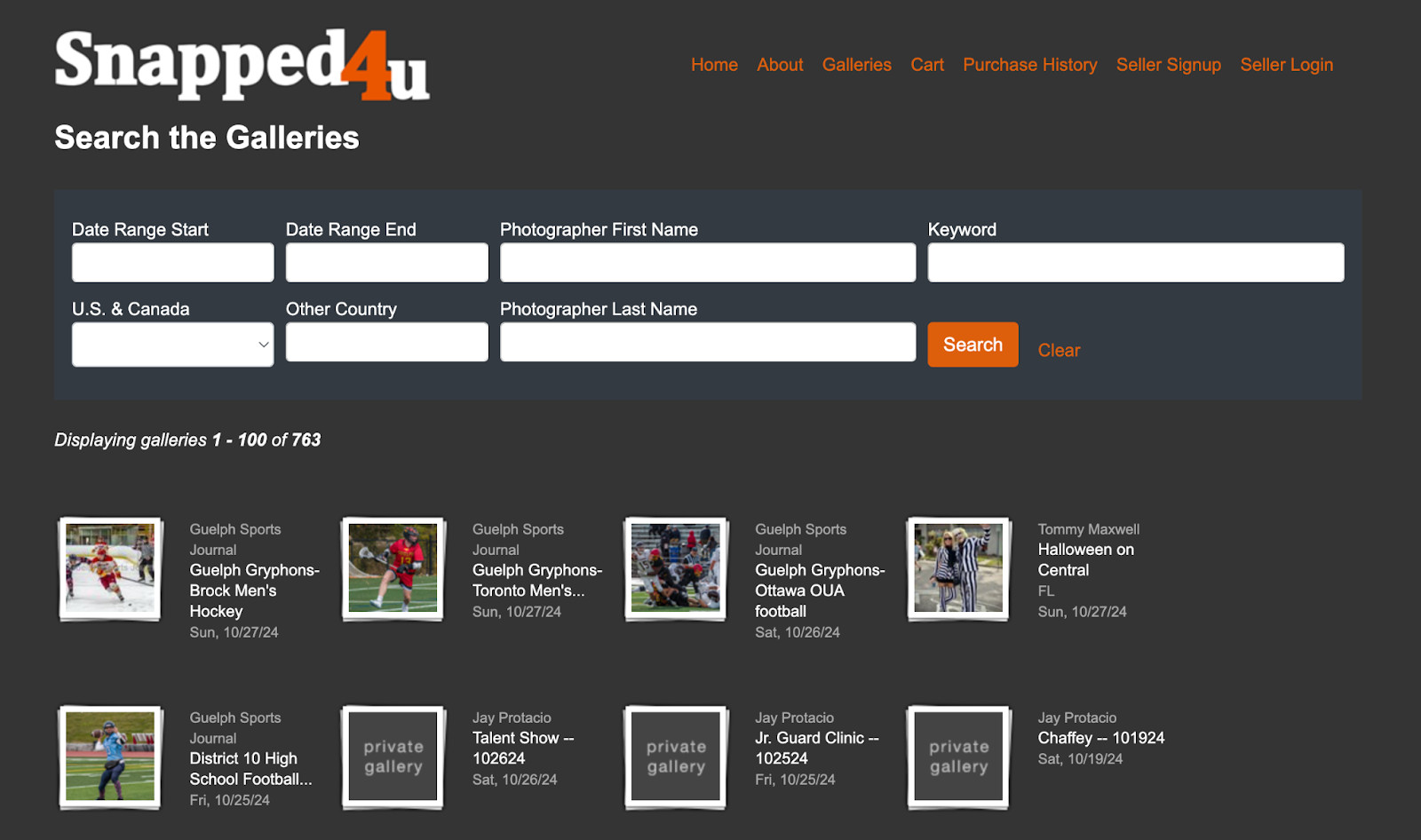 Snapped4U homepage showing photos from sports photographers
Snapped4U homepage showing photos from sports photographers
Snapped4U is a marketplace for photographers specializing in portrait and event photography. It enables photographers to create personalized galleries, set their own prices (up to $20 per image), and sell digital files directly to clients.
1.12.1 How Does Snapped4U Pay?
Snapped4U charges a one-time $10 registration fee and retains a 10% to 12% commission on sales. Photographers are paid via PayPal on the first and 15th of each month.
1.13 Foap
Foap allows photographers to sell directly to brands.
 Foap creator landing page advertises a mobile app for photographers
Foap creator landing page advertises a mobile app for photographers
Foap lets photographers sell commercial-quality images directly to brands and individuals. Photographers can participate in “missions,” where brands set specific photo or video requirements and reward winners.
1.13.1 How Does Foap Pay?
Mission payouts range from $100 to $2,000. Users can also sell individual photos on Foap market. Foap takes a 50% commission on all sales.
1.14 EyeEm
EyeEm combines a photo community with a marketplace.
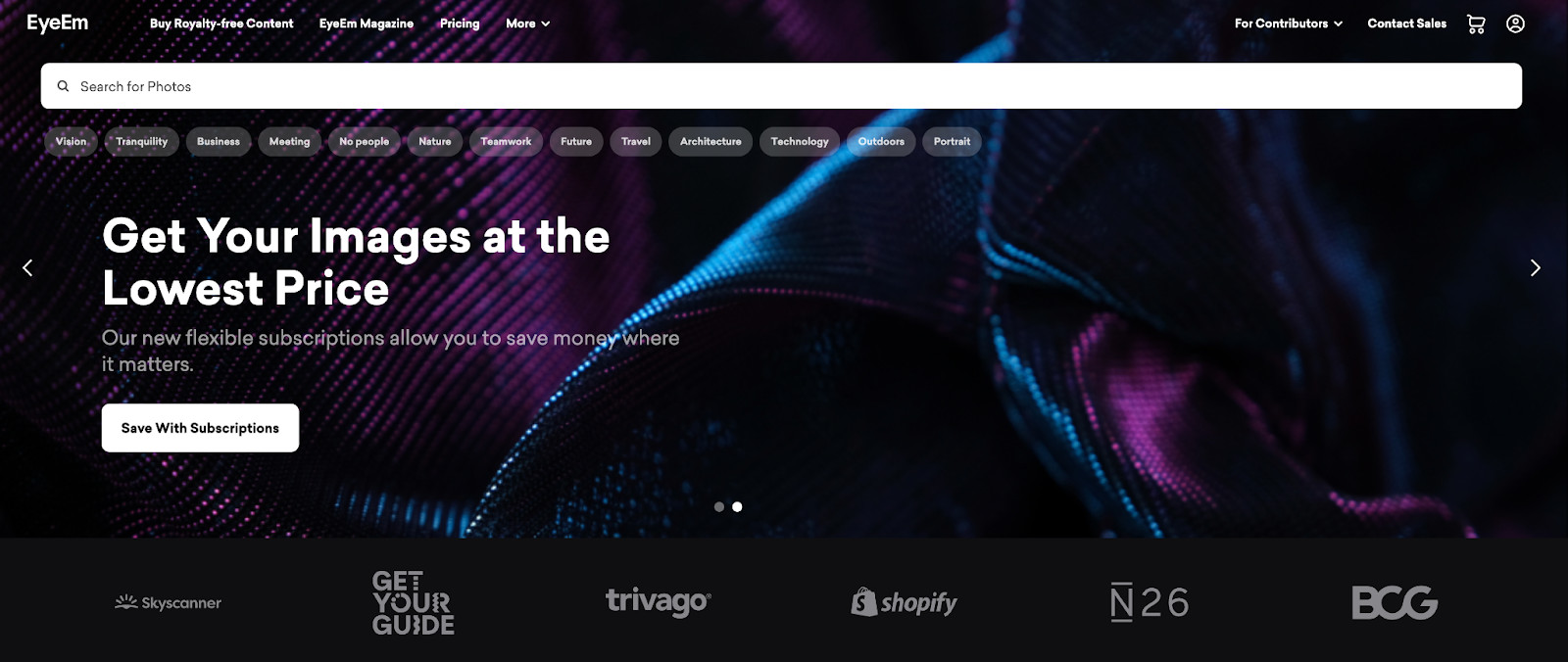 EyeEm homepage with a search bar and examples of high-profile clients
EyeEm homepage with a search bar and examples of high-profile clients
EyeEm invites photographers to contribute to missions that call for images on specific themes.
1.14.1 How Does EyeEm Pay?
Contributors earn a 50% commission on each sale made through the EyeEm marketplace. Photographers are paid via PayPal.
1.15 Pond5 (for videos)
Pond5 is a marketplace for video content.
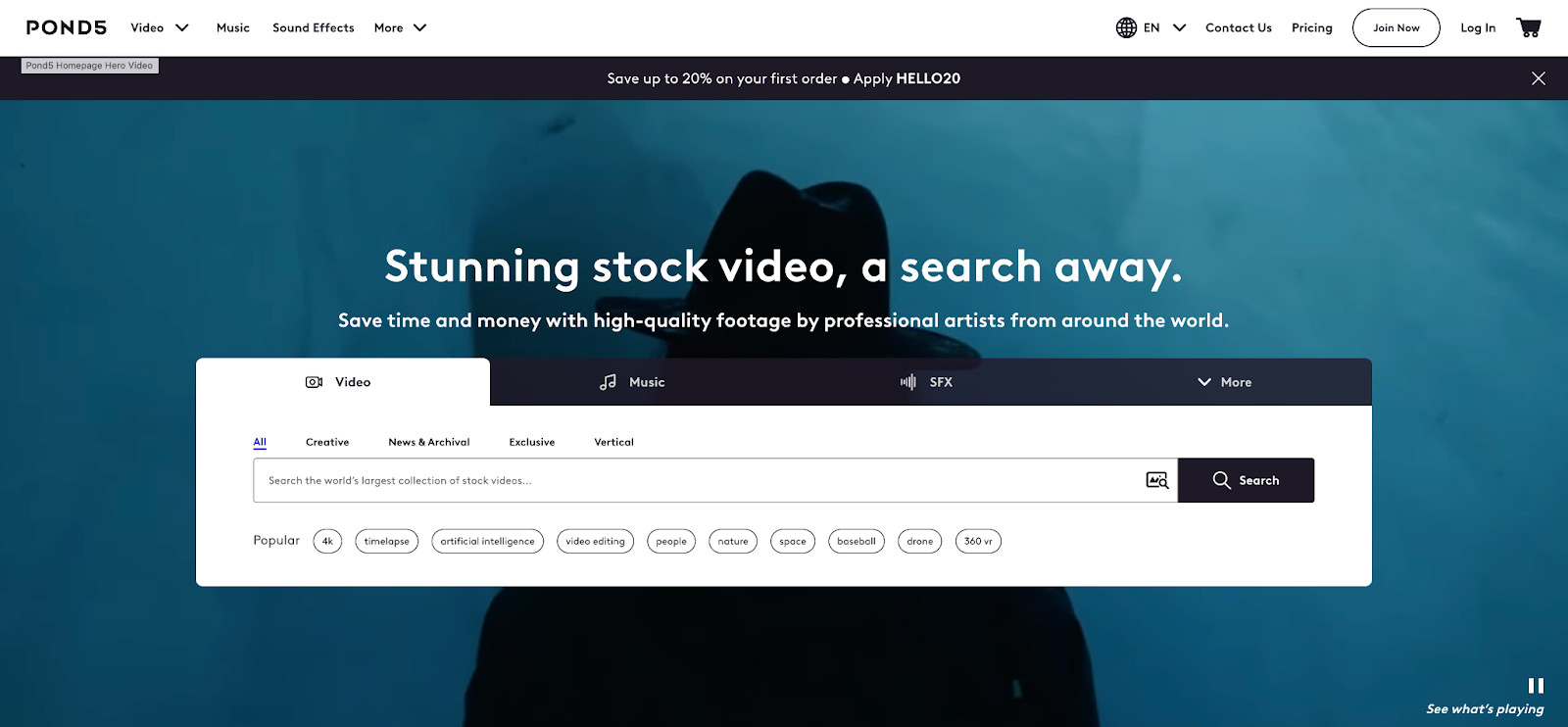 Pond5
Pond5
Pond5 specializes in selling royalty-free videos, music, sound effects, and other assets. Its customer base includes clients like the BBC and Disney.
1.15.1 How Does Pond5 Pay?
Video artists earn a 40% royalty share, with the option to make content exclusive and earn up to 60%. Contributors can respond to client briefs via the Artist Portal. Pond5 also offers a referral program.
2. What Tips Can Help You Succeed In Selling Photos Online?
To thrive in the competitive world of online photography sales, consider these strategies:
2.1 Define Your Stock Photography Niche
Maintaining a consistent style or theme is essential. Whether you focus on travel, fashion, nature, or food, consistency will resonate with your audience. Keyword research using tools like Google Trends can help you evaluate the demand for specific topics and styles. According to research from the Santa Fe University of Art and Design’s Photography Department, in July 2025, photographers specializing in a niche earned 30% more revenue.
2.2 Get On Instagram
Building an audience is crucial. Visual social platforms like Instagram can help you reach a wide audience. Use Instagram tools to engage with popular hashtags and grow a following of potential customers.
2.3 Integrate Ecommerce Into Your Website
Adding a Shopify Buy Button to your website makes it easier for customers to purchase stock images directly from you. Photographer Dave Sandford, for example, showcases his wildlife photography and offers prints and calendars through his Shopify store.
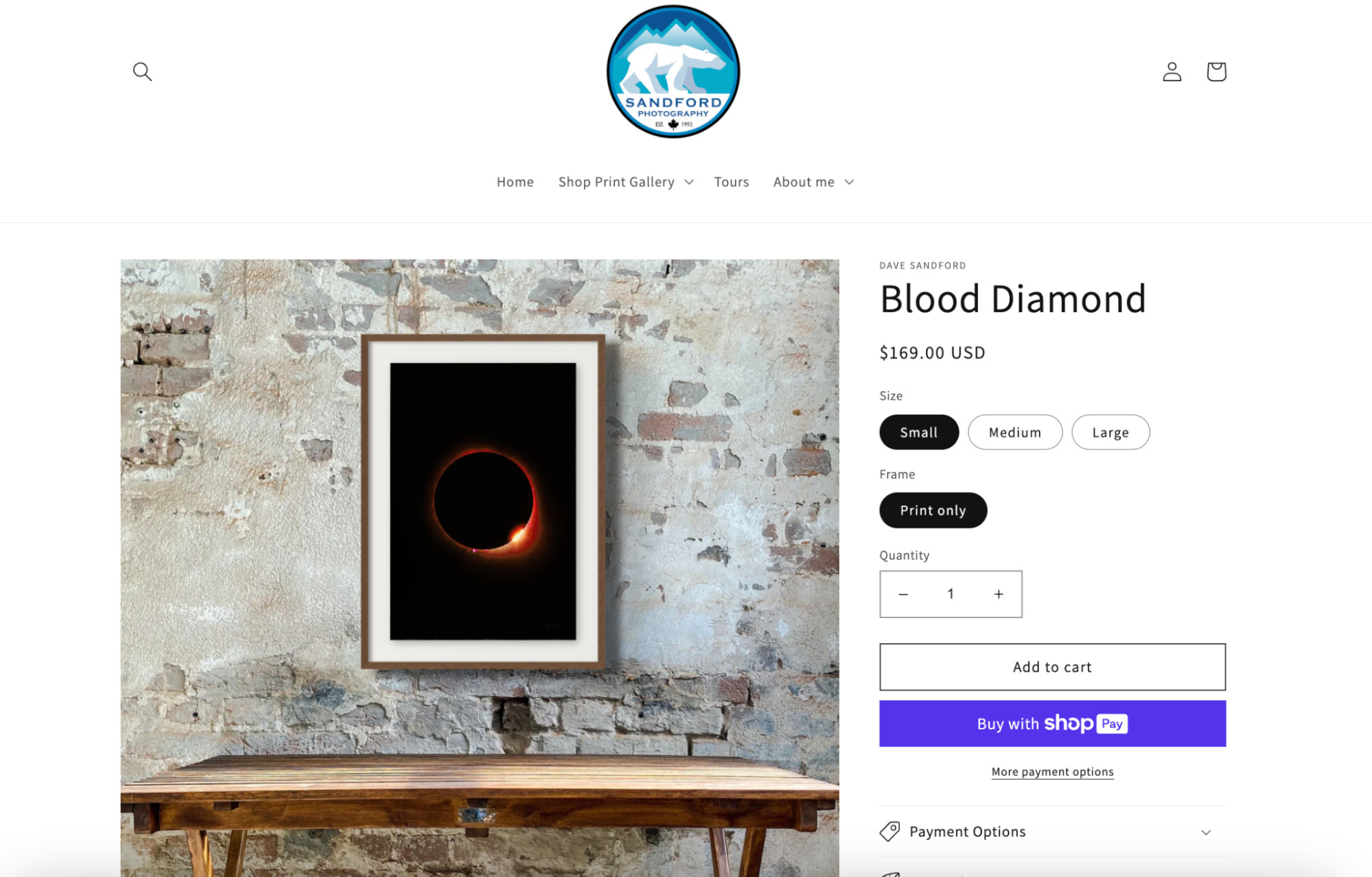 Product page for a print of a moon with a red border against a black background.
Product page for a print of a moon with a red border against a black background.
2.3.1 Dfphoto.net Can Help You
At dfphoto.net, we provide resources and guidance for integrating e-commerce into your photography website. Explore our articles and tutorials to enhance your online presence and sales.
2.4 Understand Your Market
Knowing your target market is key to producing photos that appeal to them. For instance, if you specialize in wedding photography, your target market might be wedding stationery brands or suit wholesalers, rather than brides and grooms.
3. How Do I Set Up My Online Portfolio?
Setting up an effective online portfolio is essential for showcasing your work and attracting potential buyers.
3.1 Choose The Right Platform
The best platform depends on your goals and the level of control you desire. For hobbyists or those seeking passive income, stock photo sites like iStock or Alamy are suitable. If you want assignments without self-promotion, Unsplash+ is an option. For complete control, e-commerce platforms like Shopify are ideal.
3.2 Plan Your Portfolio’s Structure
A well-structured portfolio is crucial. Pay attention to layout, social proof, categories, organization, and gallery size.
3.3 Optimize Images For The Web
Fast-loading images are essential for a good user experience. Compress image sizes, use descriptive file names, and write alt text.
3.4 Create An About Page
An About page helps potential customers connect with you. Share your photography journey, inspirations, and passions.
3.4.1 Example
Address: 1600 St Michael’s Dr, Santa Fe, NM 87505, United States. Phone: +1 (505) 471-6001. Website: dfphoto.net.
3.5 Implement E-Commerce Functionality
An e-commerce platform like Shopify handles the logistics of selling photos online, including building a storefront, processing payments, and managing shipping.
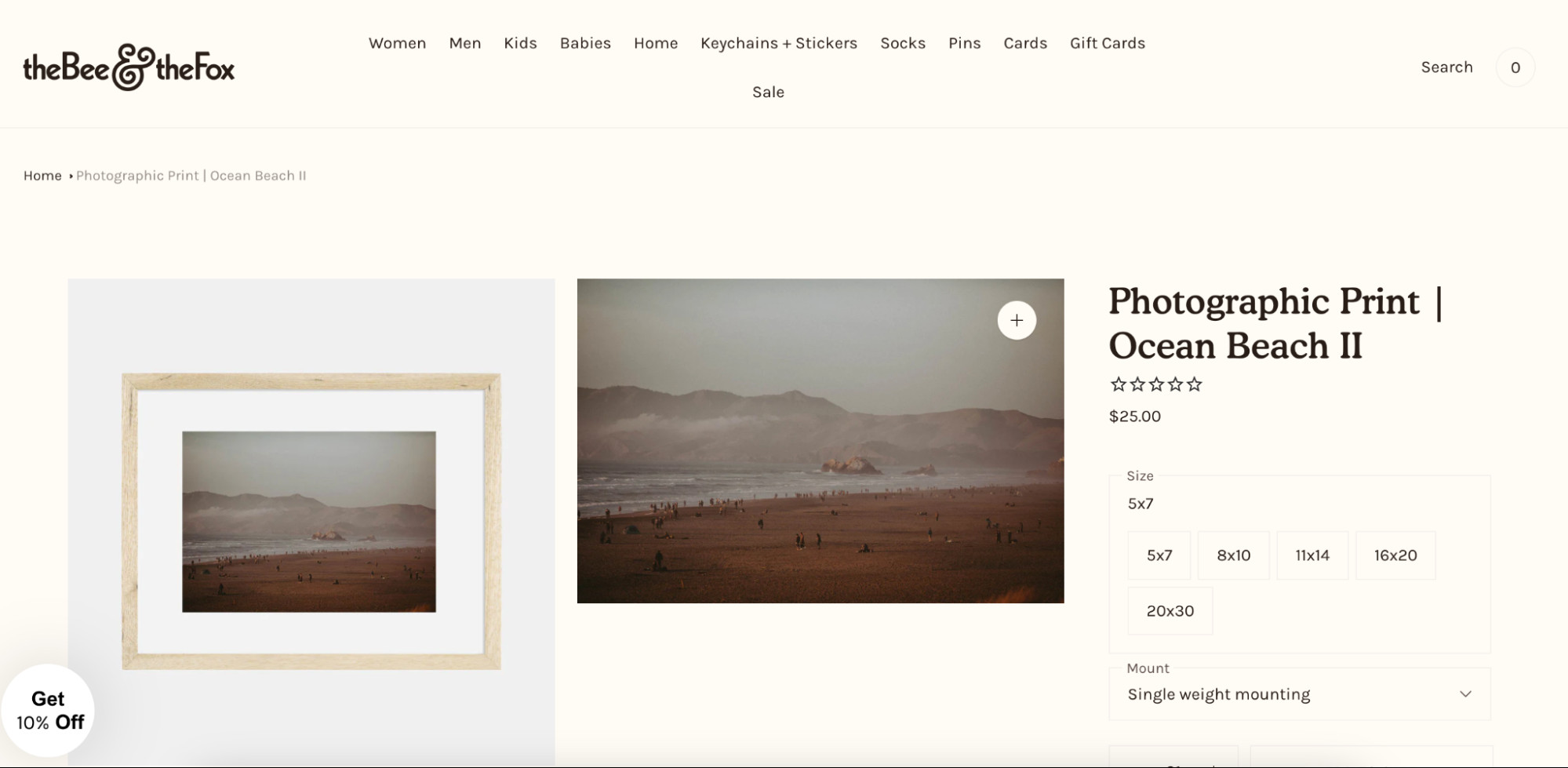 Product page for a 5×7 printed photo of a beach.
Product page for a 5×7 printed photo of a beach.
3.6 Ensure Mobile Compatibility
Ensure your portfolio looks good on mobile devices, as more than half of global website traffic comes from mobile devices.
3.7 Launch And Promote Your Photos
Share your portfolio online using marketing tactics such as reposting images on social media, pinning photos on Pinterest, gifting free prints to influencers, and documenting behind-the-scenes content on TikTok, YouTube, or Instagram Reels.
4. How Can I Sell Photos As Prints And Photo Books?
Creating physical products featuring your photography is a great way to generate income.
4.1 Selling Photos As Prints
You can sell photos as prints on paper or physical products like mugs, t-shirts, and calendars. Work with a local photo lab or use a print-on-demand company to dropship a wide range of products.
4.2 Selling Photos As Photo Books
Photo books are another excellent physical product. Focus on niche themes to create compelling books. Use print-on-demand services to test demand before investing upfront.
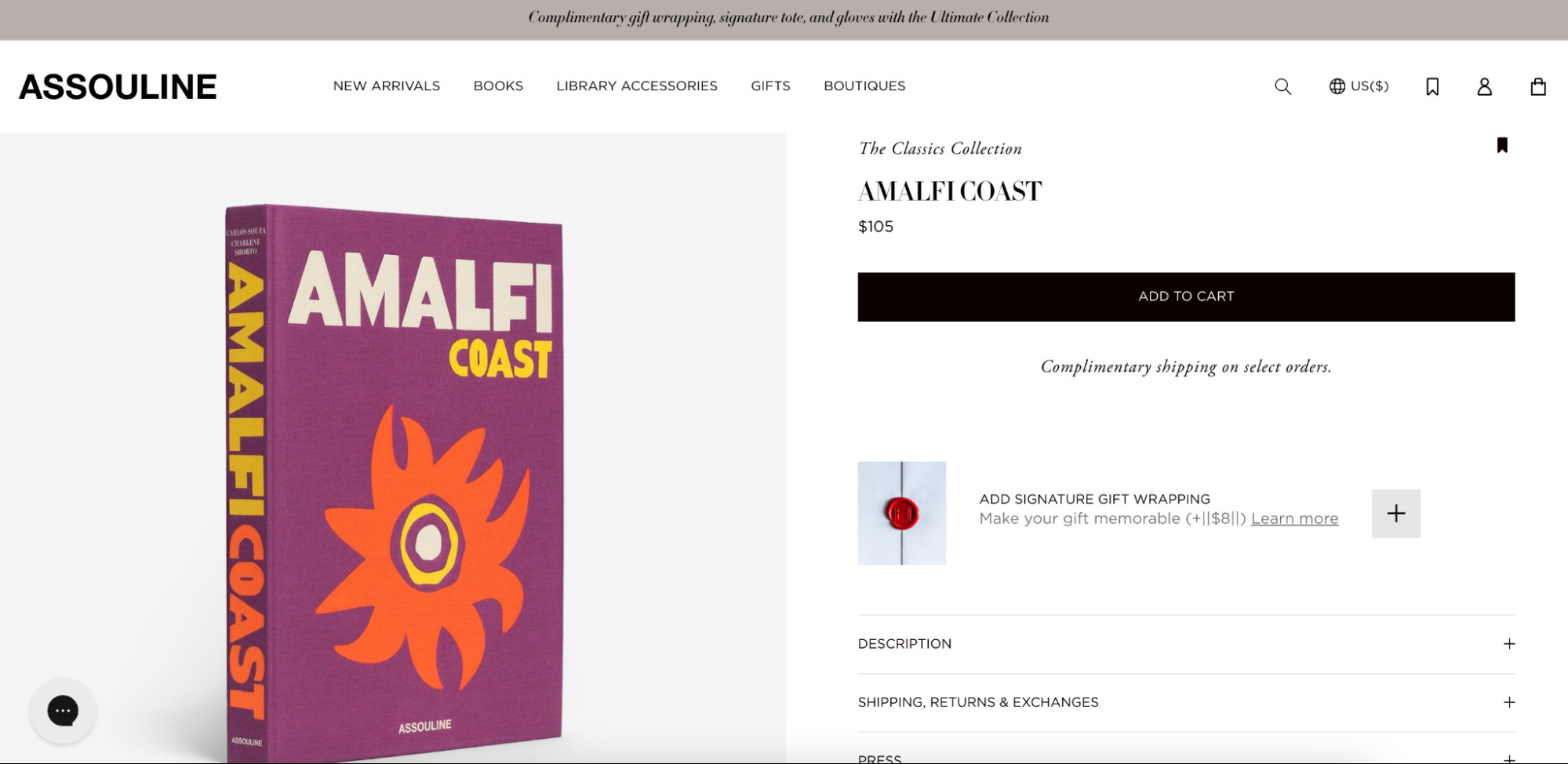 Photobook of images taken on the Amalfi Coast.
Photobook of images taken on the Amalfi Coast.
5. How Can I Sell My Photography Services?
Offering photography services can be a lucrative business opportunity.
5.1 Networking Tips
- Always have business cards handy.
- Optimize your LinkedIn profile.
- Attend networking events.
- Build a personal brand by regularly sharing your work on social media.
5.2 Booking Platform
Use a booking platform to let prospective clients see your schedule and book you when you’re available. Consider Setmore, SimplyBook.me, or a Shopify scheduling app.
6. What Is The Best Pricing Strategy For Selling Photos Online?
Setting the right prices is crucial for maximizing your earnings.
6.1 Market Research
Ask your target market how much they’d pay for your photos and see how much comparable photos sell for on stock image sites.
6.2 Determine Your Profit Margins
Consider the costs of photography, like equipment, website hosting fees, and marketing budgets.
6.3 Set Different Prices For Usage
Exclusive photos can sell for more than non-exclusive ones.
6.4 Offer Discounts
Experiment with discounts and promotions to incentivize people to buy your photos.
6.5 Consider Product Bundles
Sell collections of related images at a discounted price.
7. What Is The Legal Primer For Selling Your Photos Online?
Understanding the legal aspects of selling photos is essential for protecting your rights.
7.1 Glossary Of Legal Terms
- Editorial use: Permission to use in blogs, newspapers, magazines, and other publications.
- Commercial use: Permission to use in marketing and advertising.
- Retail use: Permission to use in the creation of a physical product to be sold.
- Exclusive use: The purchaser is the only one who can use the photo.
- Non-exclusive use: Photo licenses can be purchased and used by anyone.
- Public domain: Photos have no restrictions or copyright claims.
- Creative Commons: Conditional usage is allowed, as long as it’s in compliance with the stated restrictions.
- Royalty free: Others can buy a license and use the photo for an unlimited duration and unlimited number of times.
- Rights managed: A one-time license can be purchased to use the photo with restrictions regarding distribution.
- Right of publicity: The subjects in your photos are entitled to certain rights when it comes to their inclusion in your photography.
7.2 What To Do If Someone Steals Your Photos
Watermark your digital images before selling them online. If someone uses your photos without permission, send a cease and desist request or an invoice.
8. FAQ: Selling Photos Online
8.1 What Is The Best Way To Sell Photographs?
Selling them as stock images on third-party websites like iStock, Shutterstock, or Alamy is generally quick, easy, and affordable.
8.2 Where Can I Sell My Photos Online For Money?
Popular platforms include Alamy, 500px, Shutterstock, Getty Images, iStock, Stocksy, Picfair, Adobe Stock, Envato Elements, and Unsplash.
8.3 How Do You Make Money From Stock Photography?
A stock photography website licenses individual images to clients for a set price, and you receive a royalty payment.
Conclusion
Selling your photos for money can be a rewarding venture. By understanding the available platforms, implementing effective strategies, and staying informed about legal aspects, you can turn your passion for photography into a successful business.
Explore dfphoto.net for more resources, inspiration, and a thriving photography community to help you on your journey. Start capturing and selling your beautiful images today!
